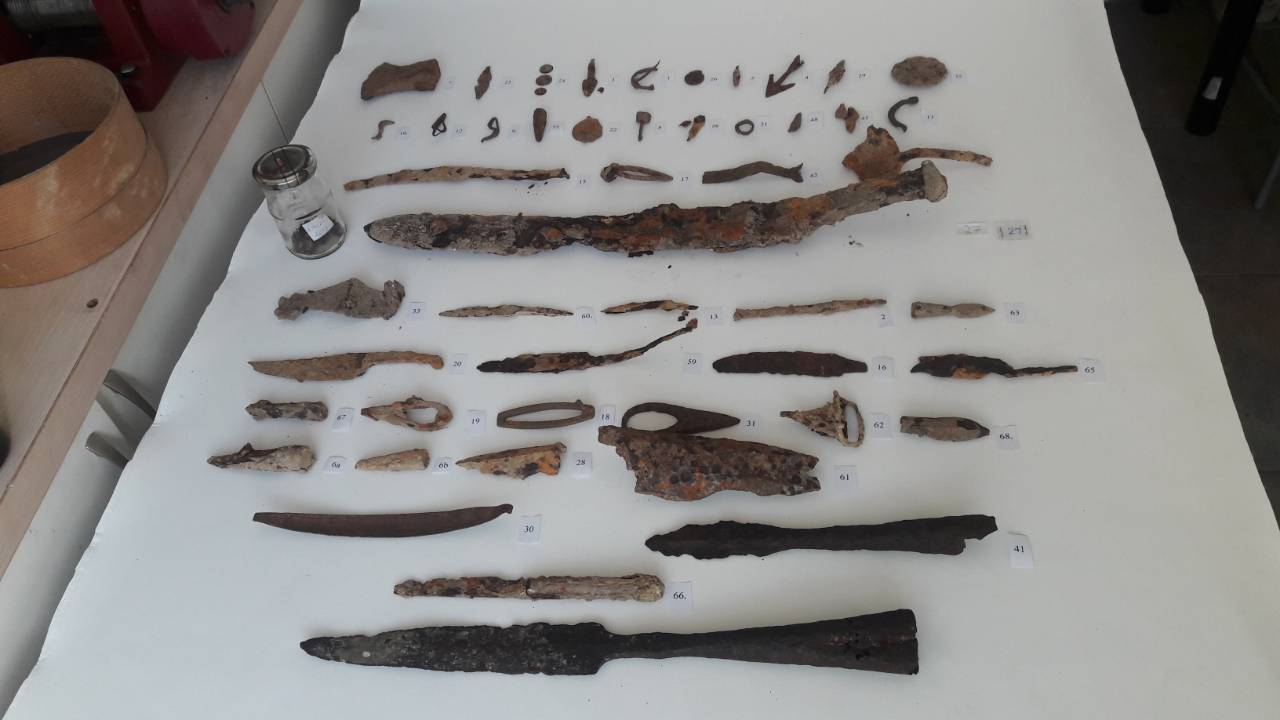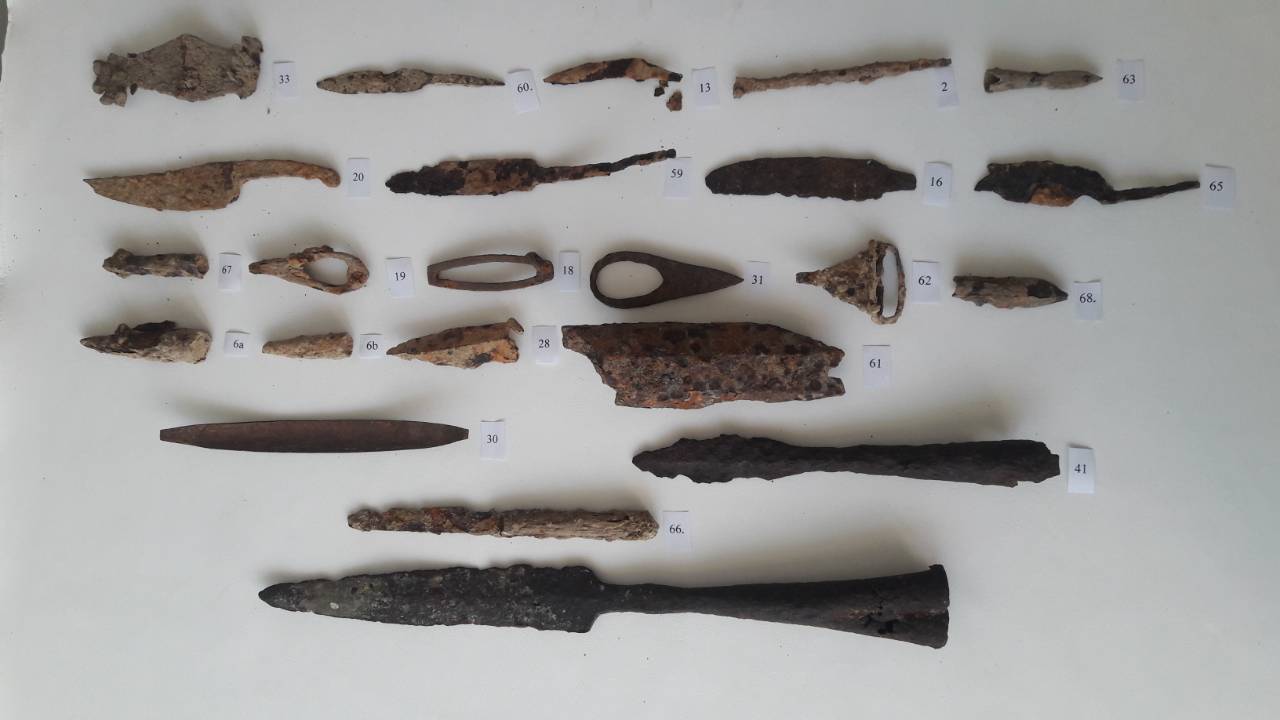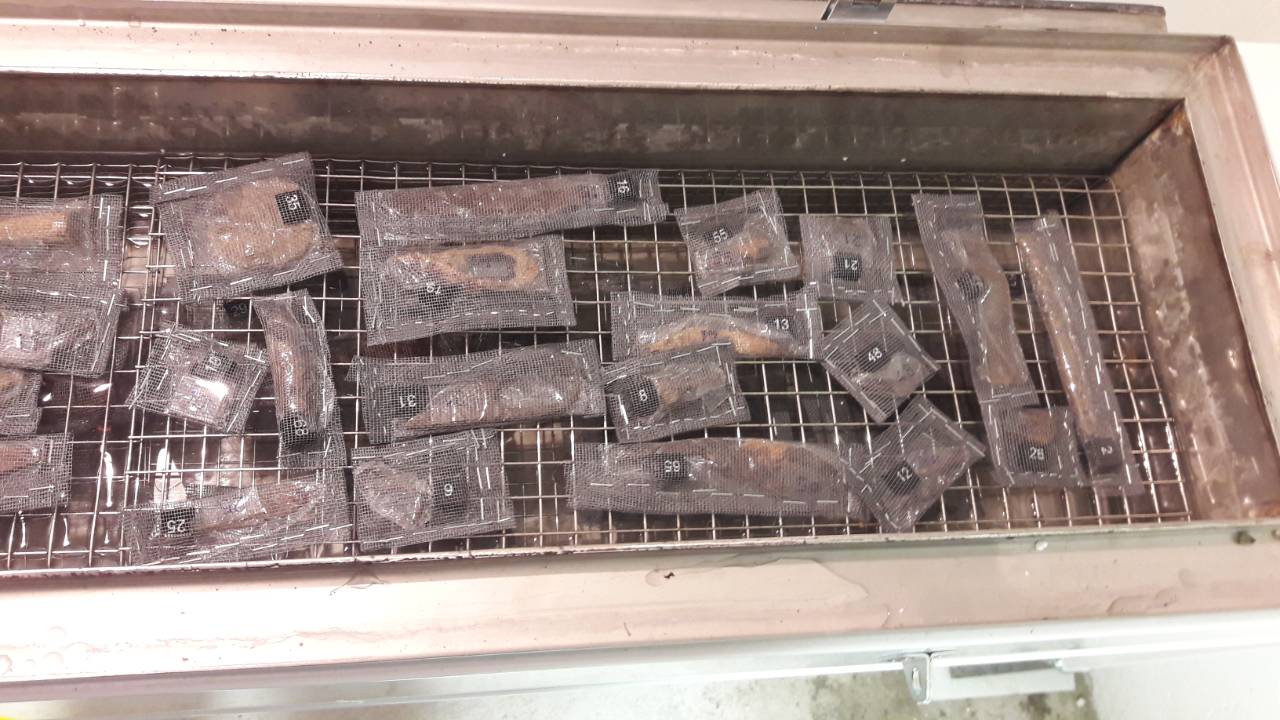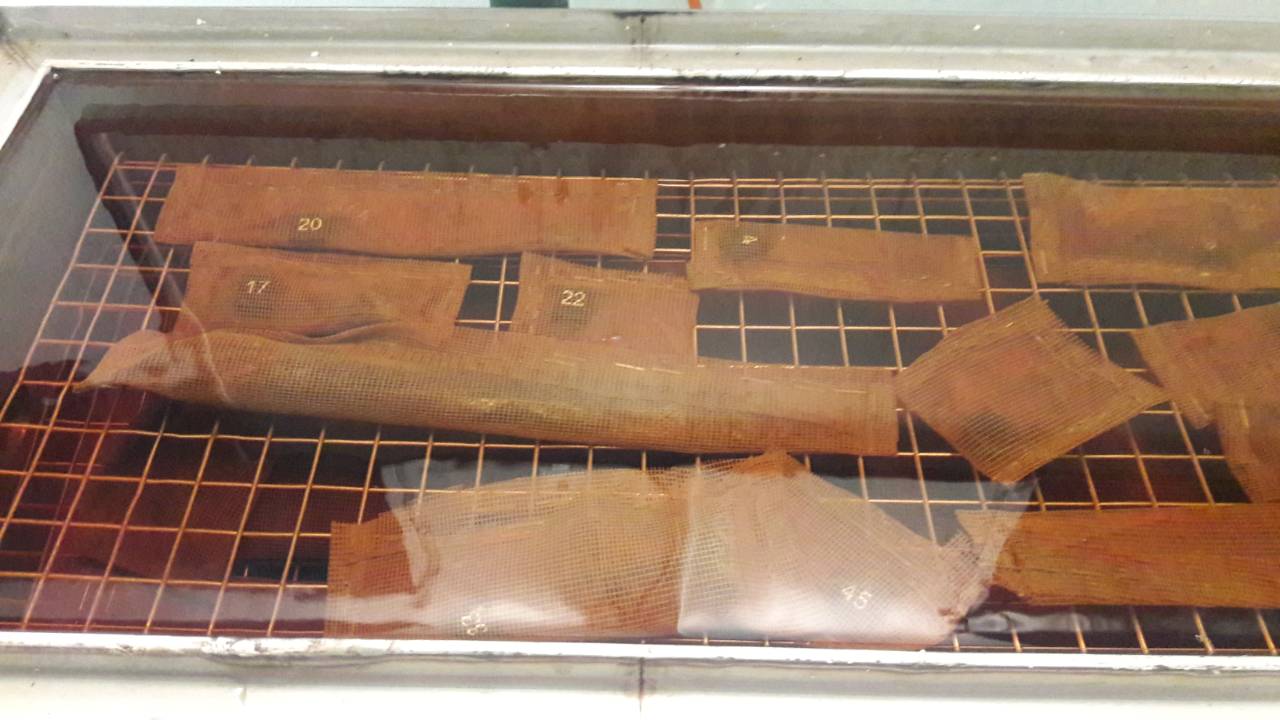Featured
Stabilization

Information
Material stabilization is a chemical process that has the main goal of eliminating the main causes of corrosion processes on objects made of metals or alloys that are susceptible to a high degree of corrosion resistance. It is mostly applied to archaeological metal objects, but it is not excluded that it can also be applied to more modern materials, all with the aim of achieving the best possible result in the final conservation of the object by eliminating the possibility of re-initiating corrosion processes.
Example of desalination of ferrous material
Iron desalination is a chemical process lasting several months that has the task of reducing salts within the core and structure of the metal to a minimum in order to stop the possible resumption of corrosion processes. One cycle consists of two parts. The alkaline part, which has the function of reducing salts, and the neutralization part, which has the function of neutralizing objects from alkaline saturation. The cycle duration is between 5 and 7 months and goes through 10 to 12 phases. Every 15 days, samples are taken on which precise measurements of the amount of chloride x-Cl-mg/1L are performed. which confirm the duration of one cycle. Wastewater from chemicals is disposed of in tanks that are transported to recycling companies that dispose of such waste.
Iron stabilization

Stabilization of iron material is a very important and unavoidable process in the restoration and conservation of objects. The most common stabilization procedure is in the restoration of archaeological iron material, where objects have often been in the ground for several thousand years. The composition of such material in all physical and chemical properties has completely changed. Corrosion processes on iron are very active and develop within its core. Stabilization of iron is a complex chemical process lasting several months, desalination, the purpose of which is to clean the corrosion hotspots in the core from salts and chlorides, which, in combination with the atmosphere and moisture, are the main drivers of corrosion processes and rusting.
Bronze stabilization

Stabilization of bronze material is also an important restoration process. The chemical process of stabilizing bronze neutralizes the harmful effects of salts and chlorides that create corrosion deposits on objects. The stabilization process is much shorter - it only takes a few days, depending on the condition of the object. On objects where corrosion has created major changes to the surface, stabilization processes can last longer, with the aim of extracting chloride from the core, which would initiate a new corrosion process.







